Respiratory Oscillometry and Functional Performance in Different COPD Phenotypes
- PMID: 38464561
- PMCID: PMC10924760
- DOI: 10.2147/COPD.S446085
Respiratory Oscillometry and Functional Performance in Different COPD Phenotypes
Abstract
Purpose: Chronic obstructive pulmonary disease (COPD) phenotypes may introduce different characteristics that need to be known to improve treatment. Respiratory oscillometry provides a detailed analysis and may offer insight into the pathophysiology of COPD. In this paper, we used this method to evaluate the differences in respiratory mechanics of COPD phenotypes.
Patients and methods: This study investigated a sample of 83 volunteers, being divided into control group (CG = 20), emphysema (n = 23), CB (n = 20) and asthma-COPD overlap syndrome (ACOS, n = 20). These analyses were performed before and after bronchodilator (BD) use. Functional capacity was evaluated using the Glittre‑ADL test, handgrip strength and respiratory pressures.
Results: Initially it was observed that oscillometry provided a detailed description of the COPD phenotypes, which was consistent with the involved pathophysiology. A correlation between oscillometry and functional capacity was observed (r=-0.541; p = 0.0001), particularly in the emphysema phenotype (r = -0.496, p = 0.031). BD response was different among the studied phenotypes. This resulted in an accurate discrimination of ACOS from CB [area under the receiver operating curve (AUC) = 0.84] and emphysema (AUC = 0.82).
Conclusion: These results offer evidence that oscillatory indices may enhance the comprehension and identification of COPD phenotypes, thereby potentially improving the support provided to these patients.
Keywords: Glittre-ADL test; asthma-COPD overlap; bronchodilator response; chronic bronchitis; emphysema; forced oscillation technique; handgrip analysis; respiratory impedance.
© 2024 Teixeira et al.
Conflict of interest statement
The authors report no conflicts of interest in this work.
Figures
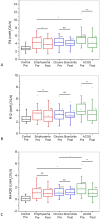
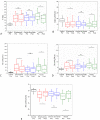
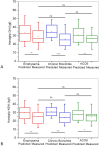
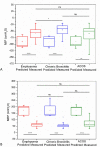

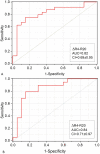
Similar articles
-
Comparison of oscillometry with lung function parameters between patients with stable bronchial asthma with airflow obstruction and chronic obstructive pulmonary disease.BMC Pulm Med. 2025 Jul 10;25(1):333. doi: 10.1186/s12890-025-03754-2. BMC Pulm Med. 2025. PMID: 40640734 Free PMC article.
-
Comparing Heterogenous Phenotypes of Chronic Obstructive Pulmonary Disease: Network Analysis and Penalized Generalized Linear Model.Int J Chron Obstruct Pulmon Dis. 2025 Apr 28;20:1267-1277. doi: 10.2147/COPD.S496199. eCollection 2025. Int J Chron Obstruct Pulmon Dis. 2025. PMID: 40322199 Free PMC article.
-
Comparison of the effectiveness of inhaler devices in asthma and chronic obstructive airways disease: a systematic review of the literature.Health Technol Assess. 2001;5(26):1-149. doi: 10.3310/hta5260. Health Technol Assess. 2001. PMID: 11701099
-
Tiotropium versus long-acting beta-agonists for stable chronic obstructive pulmonary disease.Cochrane Database Syst Rev. 2012 Sep 12;2012(9):CD009157. doi: 10.1002/14651858.CD009157.pub2. Cochrane Database Syst Rev. 2012. PMID: 22972134 Free PMC article.
-
Prophylactic antibiotics for adults with chronic obstructive pulmonary disease: a network meta-analysis.Cochrane Database Syst Rev. 2021 Jan 15;1(1):CD013198. doi: 10.1002/14651858.CD013198.pub2. Cochrane Database Syst Rev. 2021. PMID: 33448349 Free PMC article.
Cited by
-
Imaging Phenotypes Assessment by Using Quantitative Parameters for CT-Defined Subtypes of Chronic Obstructive Pulmonary Disease.Int J Chron Obstruct Pulmon Dis. 2025 Apr 28;20:1279-1286. doi: 10.2147/COPD.S505092. eCollection 2025. Int J Chron Obstruct Pulmon Dis. 2025. PMID: 40322198 Free PMC article.
-
The diagnostic value of bronchodilator response in differentiating asthma, COPD, and ACO in fixed airflow obstruction: a retrospective study.BMC Pulm Med. 2025 Jul 2;25(1):291. doi: 10.1186/s12890-025-03764-0. BMC Pulm Med. 2025. PMID: 40604764 Free PMC article.
References
-
- The global strategy for the diagnosis, management and prevention of COPD, Global Initiative for Chronic Obstructive Lung Disease (GOLD); 2023. Available from: http://wwwgoldcopdorg. Accessed February 29, 2024.

